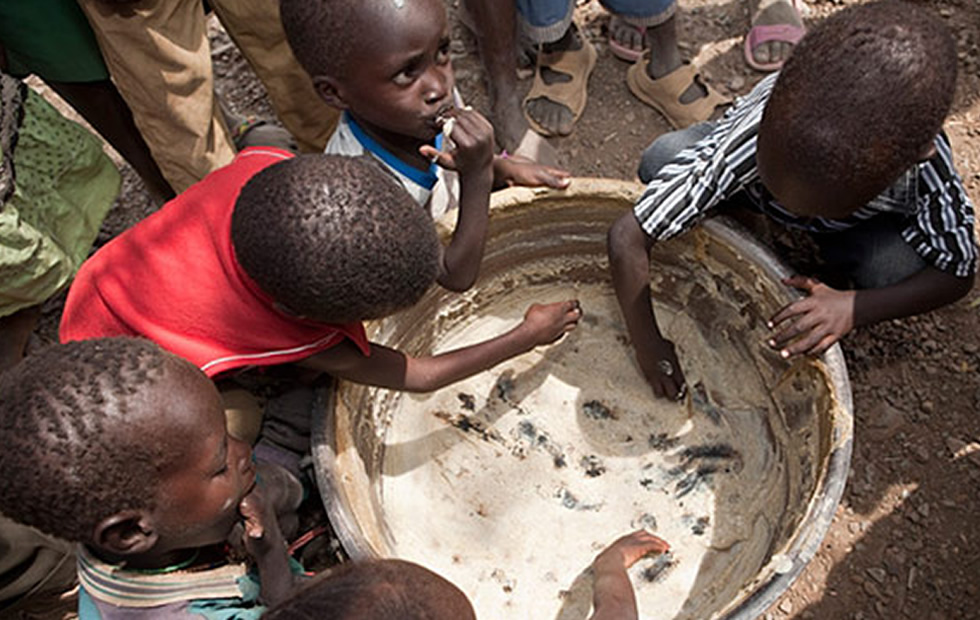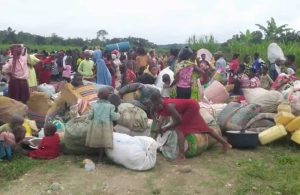
As many as 28 million people across East Africa face severe hunger if the March rains fail. With the unfolding crisis in Ukraine taking their attention, there is a real danger that the international community will not respond adequately to the escalating hunger crisis in East Africa until it is too late, Oxfam warned today.
A massive “no regrets” mobilization of international humanitarian aid is needed now to avert destitution and to help the 21 million people already facing severe levels of hunger in the midst of conflict, flooding, and a massive two-year drought – unprecedented in 40 years – in countries across East Africa.
“East Africa faces a profoundly alarming hunger crisis. Areas of Ethiopia, Kenya, Somalia, South Sudan and beyond are experiencing an unfolding full-scale catastrophe. Even if the rains do arrive this month, full recovery will be near impossible unless urgent action is taken today,” said Gabriela Bucher, Oxfam Executive Director.
“The repercussions of the Ukrainian conflict on the global food system will reverberate around the globe, but it is the poorest and most vulnerable people who will be among those hit hardest and fastest. Rising food prices are a hammer blow to millions of people who are already suffering multiple crises, and make the huge shortfall in aid potentially lethal.” said Bucher.
Covid-related hikes in global food and commodity prices were already undermining the options available to heavily indebted African governments to resolve the mass hunger facing their people. However, the crisis in Ukraine will have catastrophic new consequences as it already pushes up food and commodity prices beyond what East African governments can afford.
“The repercussions of the Ukrainian conflict on the global food system will reverberate around the globe, but it is the poorest and most vulnerable people who will be among those hit hardest and fastest. Rising food prices are a hammer blow to millions of people who are already suffering multiple crises, and make the huge shortfall in aid potentially lethal.” said Gabriela Bucher, Oxfam Executive Director
Countries in East Africa import up to 90% of their wheat from Ukraine and Russia. As disruptions begin to affect the global trade in grains, oil, transport and fertilizer, food prices are beginning to skyrocket. They hit an all-time high last week. In Somalia, the prices for staple grains were more than double those of the previous year.
In 2010-11, similar spikes in food prices pushed 44 million more people worldwide into extreme poverty, and indications are that the food-price inflation happening now will be even worse.
Ahmed Mohamud Omar (70), a pastoralist from Wajir County in Kenya, told Oxfam: “Due to the droughts our donkeys have perished and the ones remaining are too weak to pull carts. My only tuktuk is now parked idle because I can’t afford its fuel. I no longer have my camels or goats, I think about what will my family eat, where will their next meal come from, whether I will get the daily jerrican of water.”
Nyadang Martha, from Akobo in South Sudan said: “All the 40 years of my life, I have never seen anything like what is happening here in Akobo. For the past four years, it is either flood, drought, famine, violence, or COVID-19. This is just too much. I am tired of living. If it continues like this, I doubt if my girls will become full adults.”
“The world cannot again talk itself into inertia as people are pushed into extreme food insecurity. To not act now would be immoral and a dereliction of the humanitarian imperative,” said Bucher.
- Over 13 million people across Ethiopia, Kenya and Somalia have been displaced in search of water and pasture, just in the first quarter of 2022. Millions of others had to flee their farmlands and homes by conflicts especially around Ethiopia – where 9.4m people now need urgent humanitarian aid.
- The region has suffered from the worst plague of locusts in 70 years and flash flooding that has affected nearly a million people in South Sudan.
- Kenya has suffered a 70 percent drop in crop production and has declared a national disaster with 3.1m people in acute hunger, now in need of aid. Nearly half of all households in Kenya are having to borrow food or buy it on credit.
- Ethiopia is facing its highest level of food insecurity since 2016, in Somali region alone 3.5m people experience critical water and food shortage. Almost a million livestock animals have died, leaving pastoralists who entirely depend on herding for survival with nothing. Women tell us heart-breaking stories about having to skip meals so that they can feed their children.
- More than 671,000 people have recently migrated away from their homes in Somalia because nearly 90% of the country is in severe drought. This will likely leave almost half of Somali children under five acutely malnourished.
- In South Sudan, an estimated 8.3 million people will face severe food insecurity this lean season (May-July) as climatic and economic shocks intensify.
Despite alarming need, the humanitarian response is woefully underfunded. Only 3% of the total $6bn UN 2022 humanitarian appeal for Ethiopia, Somalia and South Sudan, has been funded to date. Kenya has only secured 11% of its UN flash appeal to date.
“All the 40 years of my life, I have never seen anything like what is happening here in Akobo. For the past four years, it is either flood, drought, famine, violence, or COVID-19. This is just too much. I am tired of living. If it continues like this, I doubt if my girls will become full adults.” Nyadang Martha, from Akobo in South Sudan
Idris Akhdar from WASDA a 21-year Kenyan partner with Oxfam, from Wajir County, North Eastern Kenya said: “Our team have met desperate people. People who are hungry, who are thirsty, and who are about to lose hope. In the last few days, I have seen across the region – Somali region in Ethiopia, Somalia, and Kenya – the same hunger and destitution all over. We appeal to the international community to help.”
Jilo Roba, Coordinator at the Department for Children’s Services in Kenya, one of Oxfam partners, said: “There’s a family I visited two days ago, they married off their young daughter. The father was sick so he borrowed money to go to hospital and, when he couldn’t repay it, they had to let their daughter go.”
Diyaara Ibrahim Gulie, from Wajir County in Kenya who has received food and cash assistance via Oxfam says: “We now have to skip meals and resort to one meal a day. And at times we have to prioritize the children`s eating and starve the grown-ups in order to sustain what little food we have.”
Oxfam together with local partners, is redoubling its support for those impacted by the East African hunger crisis, aiming to reach over 1.5 million people most in need with lifesaving water, cash, shelter and sanitation facilities. Oxfam will help people to build rebuild their lives from these climatic shocks.
“East Africa cannot wait. The hunger crisis, fuelled by changes in our climate and COVID-19, is worsening by the day. Oxfam is calling on all donors to urgently fill the UN humanitarian appeal funding gap, and to get funds as quickly as possible to local humanitarian organisations. The governments and warring parties in conflict zones need to ensure humanitarian agencies like Oxfam can safely reach the most vulnerable people,” said Bucher.
“We call upon the governments especially from grain exporting countries to do all they can to find suitable alternatives to the imminent disruption in the supply chain from Ukraine towards low-income, food-import dependent countries. And – as we witness the tremors triggered by the failure in international efforts to tackle the climate crisis – we underscore the need to ramp up action on climate adaptation and mitigation,” said Bucher.





